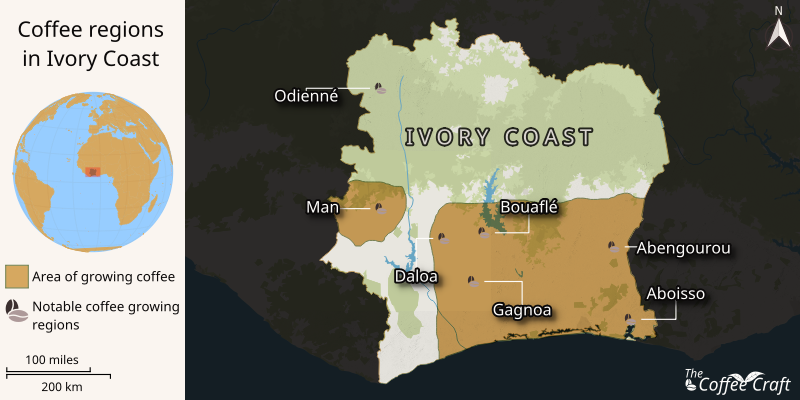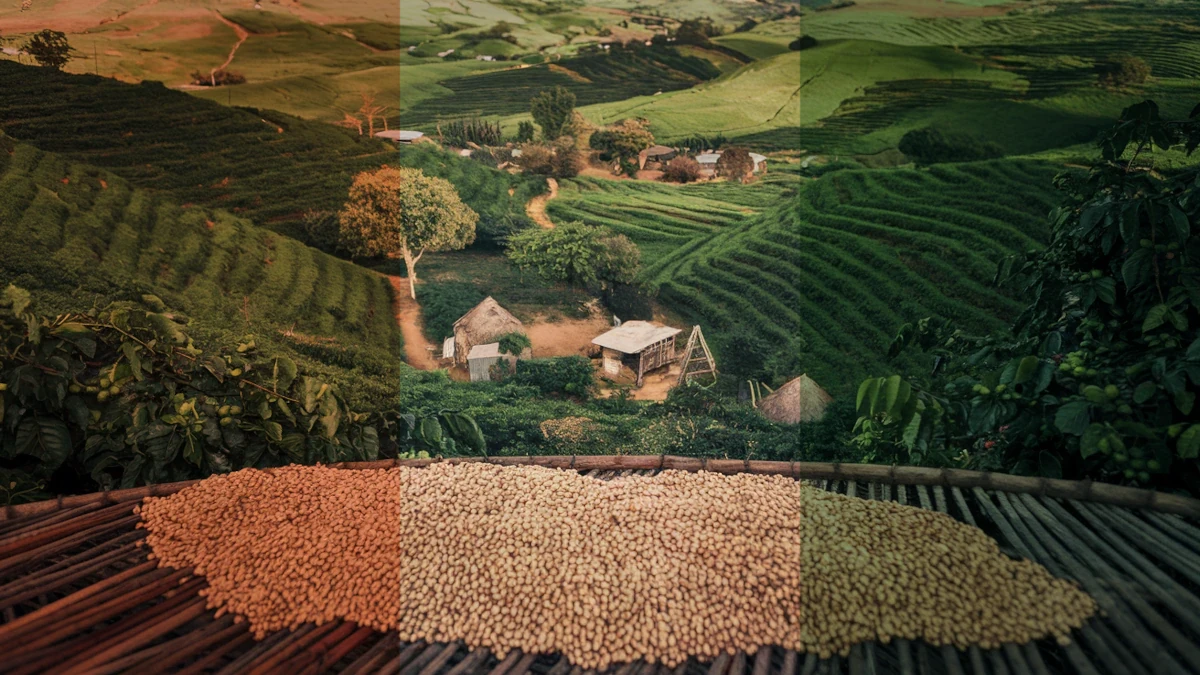Ivory Coast coffee holds a rich legacy as a global leader in robusta coffee production. Overcoming significant challenges, this West African nation is steadily reclaiming its position in the coffee industry. This article delves into the history, cultivation regions, unique taste profile, and ongoing revitalization efforts of Ivorian coffee, offering insights into its journey and future prospects.
Table of Contents
The Rise of Ivory Coast Coffee
Early Beginnings of Coffee Cultivation
Ivory Coast’s coffee journey began in the early 20th century with the introduction of robusta coffee from Java and the Congo. Before this, the country primarily cultivated Coffea liberica, brought from neighboring Liberia. However, robusta’s hardiness and adaptability soon made it the preferred choice for farmers.
Peak Production Era
By the 1970s, Ivory Coast became the world’s third-largest coffee producer, following Brazil and Colombia. The country’s coffee industry reached its zenith in 2000, with an annual output of 380,000 tonnes of robusta coffee. This golden era solidified Ivory Coast’s reputation as a robusta powerhouse.
Coffee-Growing Regions of Ivory Coast
Ivory Coast’s coffee-growing regions, each with distinct environmental conditions, contribute to the unique characteristics of its beans. Here’s a closer look:
Western Region: Man and Montagnes District
- Soil and Terrain: Volcanic soils and mountainous landscapes create ideal conditions for coffee farming.
- Specialty: Limited arabica and robusta cultivation flourish in this region.
Central Region: Daloa and Surrounding Areas
- Coffee Belt: Known as the heart of Ivorian coffee production, Daloa benefits from tropical conditions and fertile soil.
- Production Hubs: Towns like Gagnoa and Bouaflé significantly bolster robusta output.
Southern Region: Abengourou and Aboisso
- Shared Resources: Fertile soils also support cocoa farming, making this region a vital agricultural hub.
- Proximity: Located near the Ghanaian border, it contributes to robusta farming efforts.
Northern and Eastern Regions: Odienné
- Smaller Scale: These regions host limited coffee farming due to their drier climates.
- Niche Contributions: Despite challenges, they maintain a presence in Ivory Coast’s coffee landscape.

The Unique Taste Profile of Ivory Coast Coffee
Robusta’s Distinctive Qualities
Ivorian robusta coffee is known for its strong bitterness, high acidity, and bold earthy undertones. Flavor nuances often include hints of wood and a coarse aftertaste, catering to those who prefer robust and intense flavors.
Arabusta: A Rare Hybrid
Developed in the 1960s, Arabusta—a cross between arabica and robusta—offers a milder, sweeter profile. Despite its balanced flavor, Arabusta cultivation remains limited due to lower yields and longer growth cycles, making it a niche variety among small producers.
Challenges and Revitalization Efforts
Impact of Civil Wars on Coffee Production
The civil unrest between 2002 and 2011 had devastating effects on the coffee sector. Production plummeted, impacting the livelihoods of farmers and diminishing Ivory Coast’s global standing as a coffee producer.
Modern Revitalization Initiatives
Efforts to revive the coffee industry include:
- Investments: Government and private entities are channeling funds into the sector.
- Farmer Training: Programs focusing on sustainable practices and quality improvement.
- Infrastructure Development: Enhancing processing facilities to boost efficiency and output.
Rediscovering Ivory Coast Coffee
Reclaiming a Place in the Global Market
Ivory Coast is leveraging its rich history and robusta heritage to regain its position in the global coffee market. Strategic partnerships and quality improvements are driving renewed interest in Ivorian coffee.
Future Prospects
Opportunities abound in:
- Specialty Coffee: Tapping into the growing demand for unique coffee experiences.
- Hybrid Varieties: Renewed focus on Arabusta for diversification.
- Sustainability: Adopting eco-friendly practices to align with global trends.
Conclusion
Ivory Coast coffee embodies resilience, transitioning from peak production to overcoming challenges. Its robusta heritage, coupled with revitalization efforts, positions the nation for a promising future in the global coffee landscape. Whether you seek bold robusta flavors or explore rare hybrids like Arabusta, Ivory Coast coffee offers a story as rich and complex as its beans.
